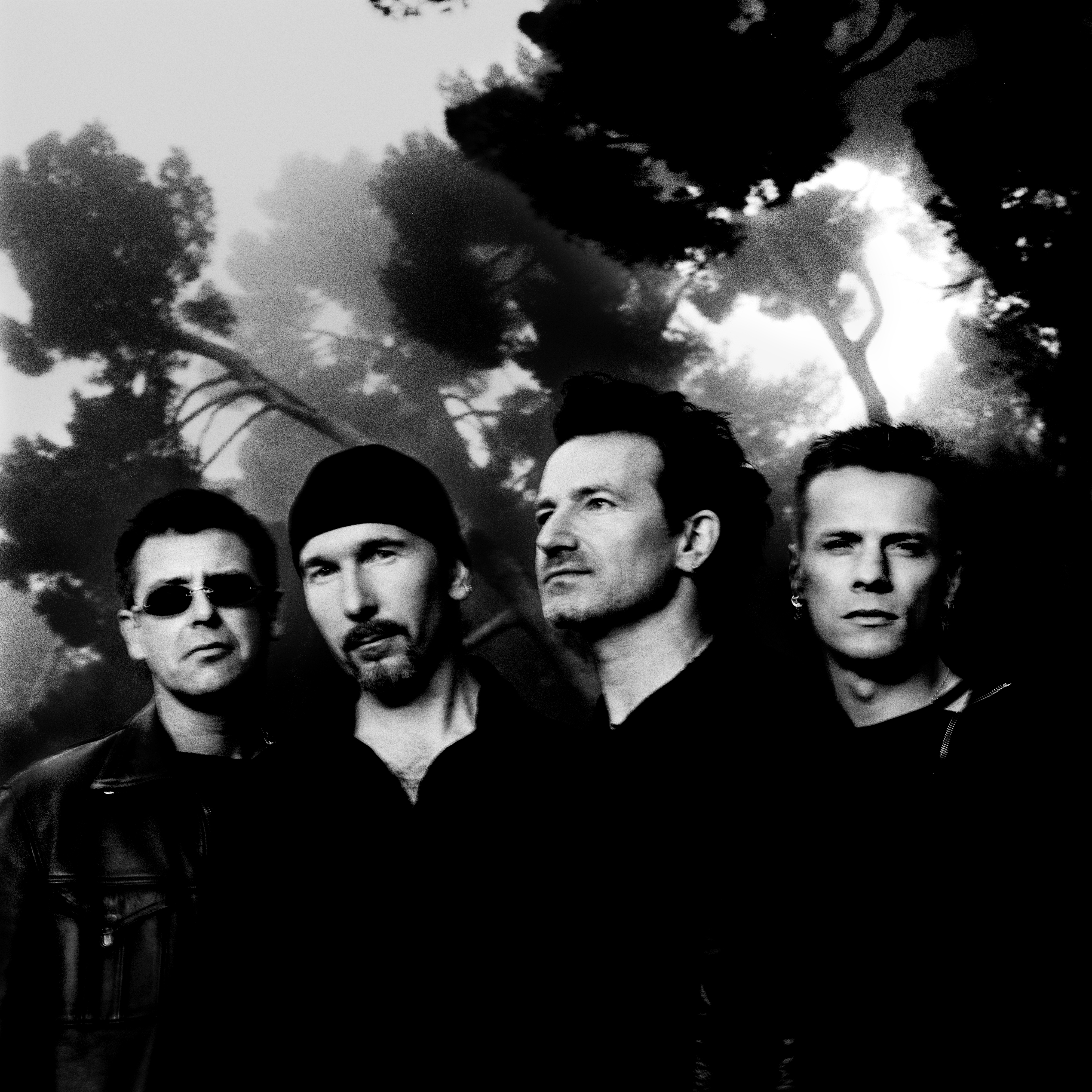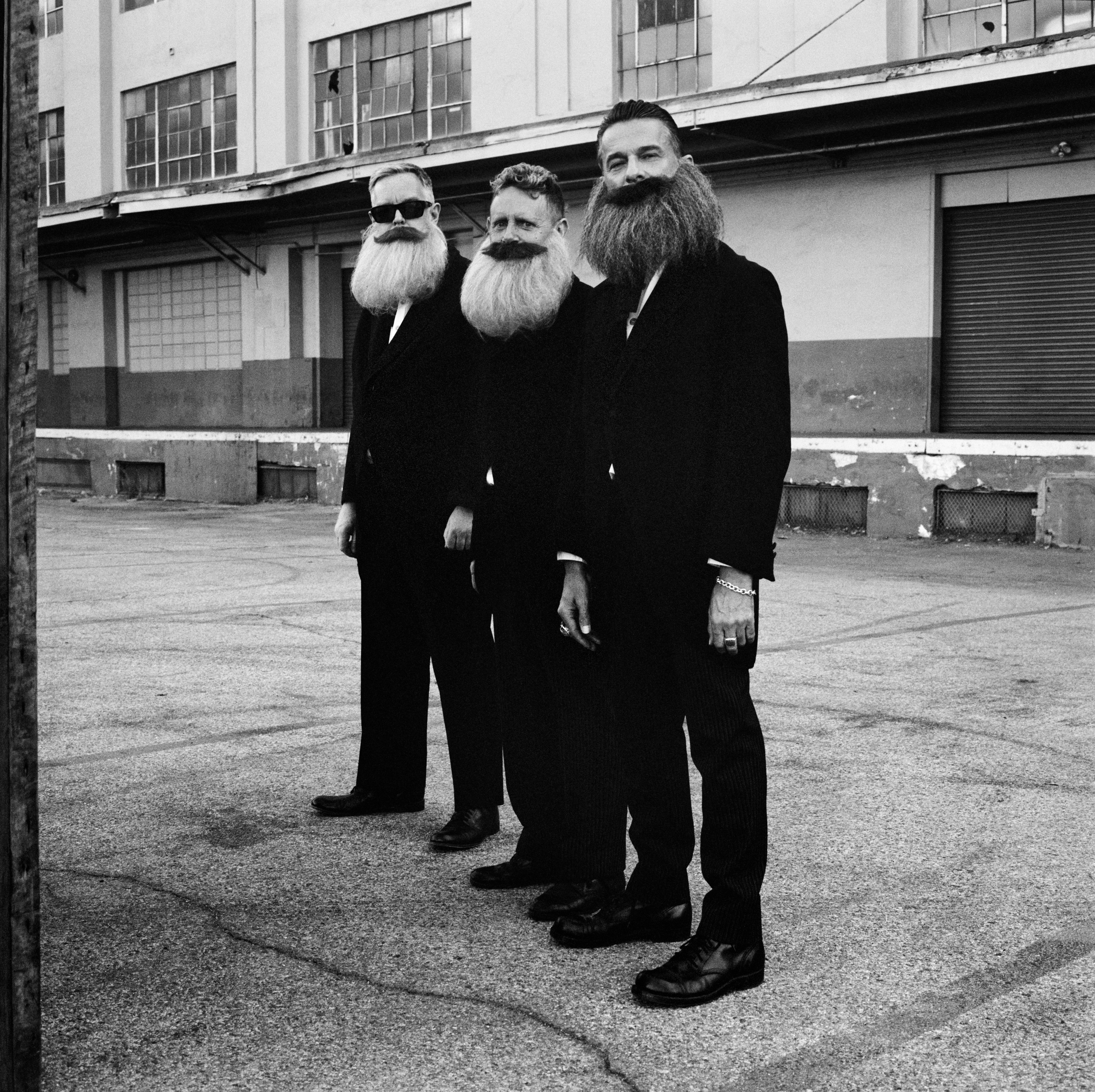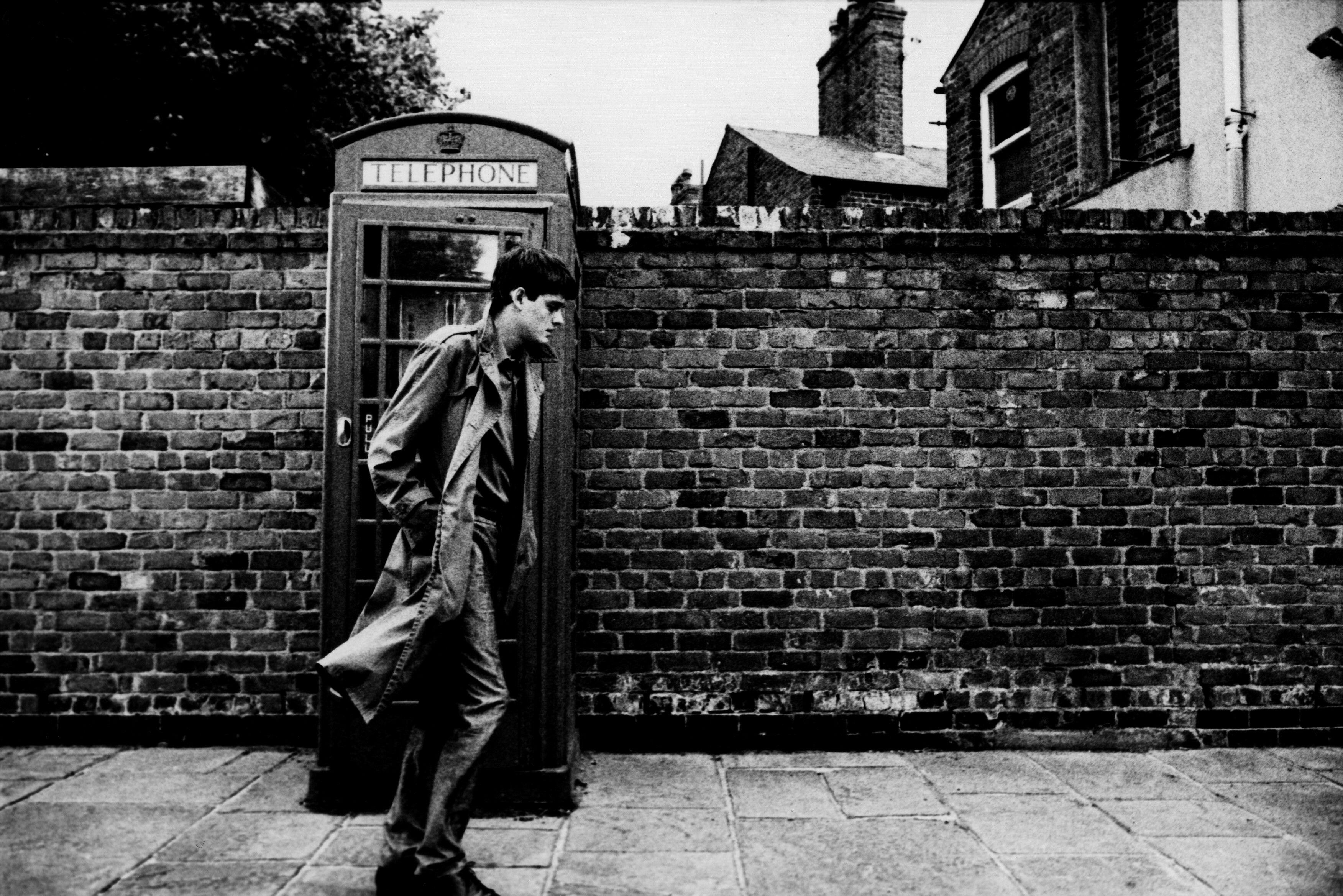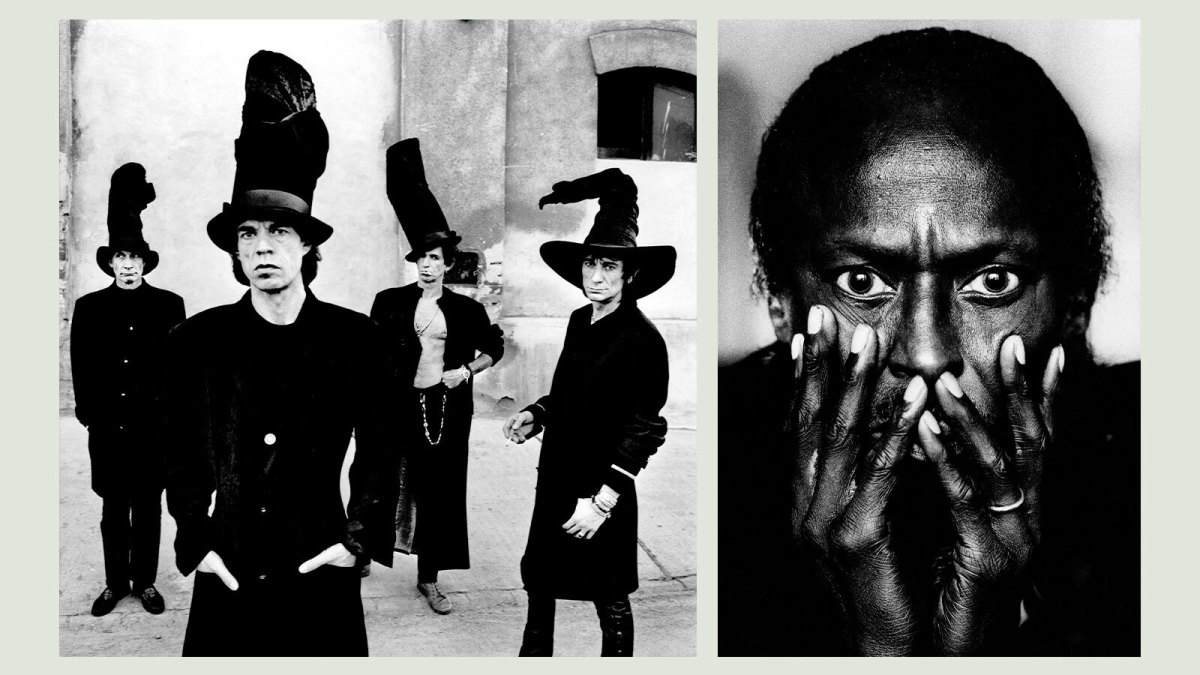Anton Corbijn is a master of the moody, revered for his black-and-white photographs of U2, Depeche Mode and Joy Division, and Control, the film (also in black-and-white) that he directed about the last band. He admits to being “a serious NME guy” when he started out in the late Seventies as a photographer for the music weekly, then a bastion of supercilious cool. But Corbijn has a silly side too. He remembers a shoot with U2 on a street in Amsterdam that began dreadfully. “I couldn’t get the vibe going at all so I dropped my trousers,” he says. “Then they were all in stitches and we continued.”
It’s quite the revelation, more Benny Hill than Bauhaus, and underlines an important point about portrait photography: you can have oodles of technical flair but if you’re no good with your subject, it’s irrelevant. Corbijn, 70, is blessed with both camera and people skills, although that doesn’t mean he sucks up to those he shoots. They don’t even need to be comfortable, he says, speaking from his studio in Amsterdam. “Just comfortable enough for them to stay. A bit of discomfort is good for the picture. My climb to this position was slow because I don’t make people look beautiful but I hopefully make them look interesting.”

Anton Corbijn
GEORG HOCHMUTH/APA-PICTUREDESK/SHUTTERSTOCK
He really does, from David Bowie in a loincloth to Miles Davis hiding behind his hands. Corbijn shot Bowie backstage when he was appearing in The Elephant Man in Chicago in 1980, having travelled there on spec at his own expense. His parents had given him money to buy a cooker “but I spent it wisely on a plane ticket and I never regretted it. Bowie was just a gentleman and it’s impossible to make him look bad. A lot of people I photographed 40 or 50 years ago were young — that works in their favour with my approach. Bono always tells me, ‘I love your old pictures.’”
• On tour with David Bowie — by the hairdresser who saw everything
Other musicians Corbijn has shot include Kurt Cobain (“the sweetest guy”), Frank Sinatra (“quite old and forgetful”), the Rolling Stones, Joni Mitchell, Patti Smith, Nick Cave, Tom Waits, Sinead O’Connor and Siouxsie Sioux. Many of those pictures feature in his vast, recently published book, Anton Corbijn.
In 1989 Corbijn moved to Los Angeles and began photographing non-musicians: the actors Robert De Niro, Clint Eastwood and Cameron Diaz; the writers William S Burroughs and Allen Ginsberg; the artists Damien Hirst, Ai Weiwei and Lucian Freud; the supermodels Kate Moss, Naomi Campbell and Christy Turlington. Even Nelson Mandela (“I had a minute, one picture, but it’s a beautiful picture, I think”).
Sometimes subterfuge is required. When he arrived to shoot the Stones armed with a selection of witches’ hats for them to wear, the band were less than keen. “Mick [Jagger] said, ‘I’m not wearing that,’” Corbijn recalls. “I kept pestering him and he went, ‘Ask Charlie [Watts]. If he wears it, I’ll wear it.’ So I went to Charlie’s room and he looked at what I had in my hands and went, ‘I’m not wearing that.’ We talked and he said, ‘Is Mick wearing it?’ I lied and said, ‘Yeah.’”
Musicians make great subjects, he says, “because they are more in charge of their own destiny”. He cites Johnny Rotten: “Great choice of clothes, so creative.” With actors “it’s all about looks. One of the reasons I loved Philip Seymour Hoffman was that he had none of that vanity. He’s one of the best who’s ever done it”. Corbijn went on to direct Hoffman in his spy film, A Most Wanted Man.

Nick Cave in London (1997)
ANTON CORBIJN
This week Corbijn is receiving the icon award at the Abbey Road Music Photography Awards. “I’m really happy to get something from England because I feel that in England I don’t really exist,” he says. He is talking about geographical separation as much as anything. Nowadays he divides his time between Amsterdam and Kenya with his wife, Nimi, but London is where he made his name. He moved there in 1979 from the Netherlands, where he had grown up, the son of a pastor, in a conservative community on an island called Hoeksche Waard.
“Music was a big escape out of the life that I had,” he says. “I had nothing to fall back on so I gave it everything when I was in London. I survived the squats, the bad food and all that.” Six months earlier Neil Spencer, then editor of NME, had told Corbijn that he would give him work if he came to London. “I moved to England, came to the NME and he didn’t know who I was.” Reminded of his promise Spencer took him on a tour of the office (“a mess compared to music magazines in Holland”) and introduced him to the writers, one of whom welcomed him by singing a song whose lyrics included, “I hate the f***ing Dutch. They live in windmills and wear clogs.”

U2 are one of Corbijn’s most enduring collaborations
ANTON CORBIJN
Days after arriving in London Corbijn got in touch with Joy Division and asked if he could photograph them. One of the shots he took in Lancaster Gate Tube station is seminal: while the rest of the overcoated band have their backs to the camera, the singer, Ian Curtis, looks directly at it. Six months later Curtis killed himself. “It was a way that people didn’t photograph in England, as far as I could tell: using the band to symbolise the music,” Corbijn says. In this case that meant austere, enigmatic and coldly stylish. “I did it for myself and nobody wanted to publish the picture until Ian died.”
• Joy Division’s Stephen Morris: ‘Ian’s death still haunts me’
If Joy Division were the perfect fit for the young, earnest Corbijn, his most enduring collaborations — with U2 and Depeche Mode — took longer to come about. With Depeche, he says, “I held back for years. I was not enamoured with their music at the time — too poppy for me. I was also not interested in U2 but the shoot had to be done in New Orleans. So I said, ‘OK, I’ll do that’, because I’d never been to New Orleans.”

Depeche Mode in Los Angeles (2016)
ANTON CORBIJN
At the start of his career Corbijn says he was “very uncomfortable with beauty” but by the time he shot Moss, Campbell and Turlington in the nude he was more at ease. Models are used to beauty and nakedness, I suppose — you’re not going to get Johnny Rotten to take his clothes off. “No, nor was I interested in that.”
After directing videos for Nirvana, Mitchell, Johnny Cash, Red Hot Chili Peppers and many others, Corbijn made another leap — into films. “I held off for a long time because I was kind of shy,” he says. “I’ve overcome that now, but to be at the head of a group of 150 people, that’s not for everybody.”
Yet when Control was suggested “I thought, ‘Well, if I ever make a movie this is probably the one, because I have this emotional connection with the subject matter.’” It’s a fantastic film — true to the spirit of Joy Division and predictably gorgeous-looking, with Sam Riley outstanding as Curtis. Peter Hook, the band’s bassist, said he knew it was “a great film” when “only two people went to the toilet” during its premiere at the Cannes film festival in 2007: his fellow band member Bernard Sumner and a 70-year-old woman.

Sam Riley as Ian Curtis in Corbijn’s film Control
ALAMY
Corbijn followed Control with The American (2010), a thriller with George Clooney; A Most Wanted Man (2014); and Life (2015), about the friendship between the Life magazine photographer Dennis Stock (Robert Pattinson) and James Dean (Dane DeHaan). All were stylish and praised, if not as enthusiastically as Control had been, but he hasn’t released a feature since. “It’s difficult to make the movies that I make — between $10 million and $20 million,” he says. “It’s easier to make the ones of $50 million and upwards.”
He has just finished his first film in ten years, though, an adaptation of Switzerland, Joanna Murray-Smith’s sinister play about a young man who travels from New York to Switzerland to persuade Patricia Highsmith to write another instalment of her Tom Ripley series. It won’t be called Switzerland because that makes Corbijn think of “cuckoo clocks or something”, and contrary to reports it won’t be in black and white, as that would make it too similar to Ripley, the 2024 series based on Highsmith’s The Talented Mr Ripley.
• Mick Rock: the photographer who captured 50 years of rock’n’roll
What it does have is Helen Mirren as Highsmith, alongside Alden Ehrenreich, Olivia Cooke and Juliet Stevenson — Corbijn has lost none of his ability to persuade talented people to work with him. Mirren plays the author and was “fabulous”, he says. “She wore a wig and she looked so like Patricia Highsmith.”
Having finished the film, due out next year, Corbijn’s focus is back on photography. There are a few people still on his wanted list, among them Bob Dylan. “I did two frames of Dylan but I’d like to do more,” he says. “It would be a great combination, him and me.”
Does he have any advice for photographers? “Don’t listen to any advice,” he says. “And don’t go after the perfect picture. I like imperfection.” Nobody does it better.
The Abbey Road Music Photography Awards are on Oct 2, abbeyroadmusicphotographyawards.com

